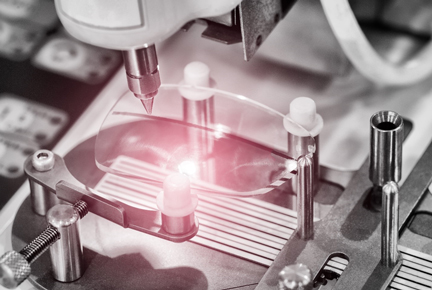
Not THAT execution! It’s the execution that takes an idea and actually makes it happen. As ECPs we look at a prescription and the patient’s needs, then design the best pair of eyewear for the patient. We’re confident that the lab will make it happen. A few days later, that perfect pair of glasses is ready and flawless. We think nothing of it. But then comes the unusual circumstance in which we have to push the envelope of our own skills and that of the lab. The lab is now recognized as a real partner in filling a need for the patient. The lab has to execute the idea.
Recently, I had a patient whose vision seemed to fluctuate during the day. Her glasses were fine some of the time, but not always. Subsequent testing showed that there were times when -.25 worked better than the original prescription, but, again, not always. While the patient wasn’t opposed to two pairs of glasses, she felt it would be difficult to keep switching glasses during her workday. The technician and I put our heads together, and thought we might experiment with a flip-up clip-on with -.25 lenses. The patient was open to the idea, and in spite of the cosmetics of the approach, felt that better vision and convenience were a priority.
Because this was an experiment, we wanted to keep the cost down. Hilco had a zyl flip-up clip-on sunglass that would fit the patient’s existing frame. It seemed like the answer IF we could get -.25 lenses into it. After all, the clip-on wasn’t designed to accommodate prescription lenses. That’s where our lab technician came in. With care and some hand edging, he was able to insert the prescription lenses. The patient was pleased with the results at dispense, and is currently trying the clip-on. We won’t know the outcome for a while, and in the interim, our team is searching for alternatives if this doesn’t work. Rest assured we will count on the skills of the lab and lab technician if needed.
This experience reminded me of two things. First, that we solve patient problems best as a team – optician, technician and lab. And second, that the best ideas have no value without someone in the lab who can execute them. The next time your patient needs something out of the ordinary, or even with the ordinary, don’t take your lab or in-house lab technician for granted. And don’t forget the manufacturers who continually research to improve lens designs. Their skills get you the glory when patients enjoy good vision.
You can learn about one lens manufacturer’s execution of advanced lens design with our CE, Merging Complex Curves – Front Surface Innovation for Free-form Progressive Lens Optimization, at 2020mag.com/ce.













